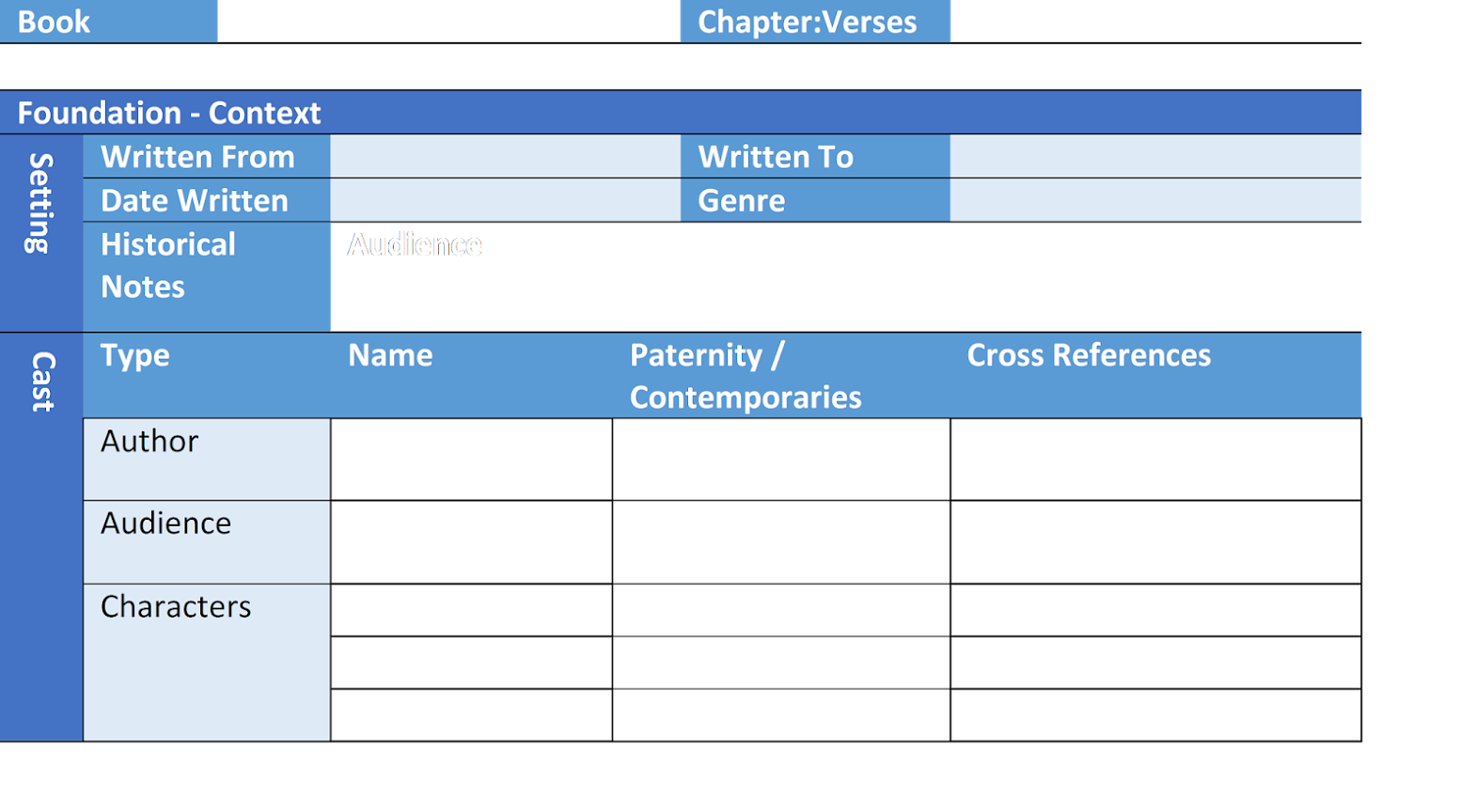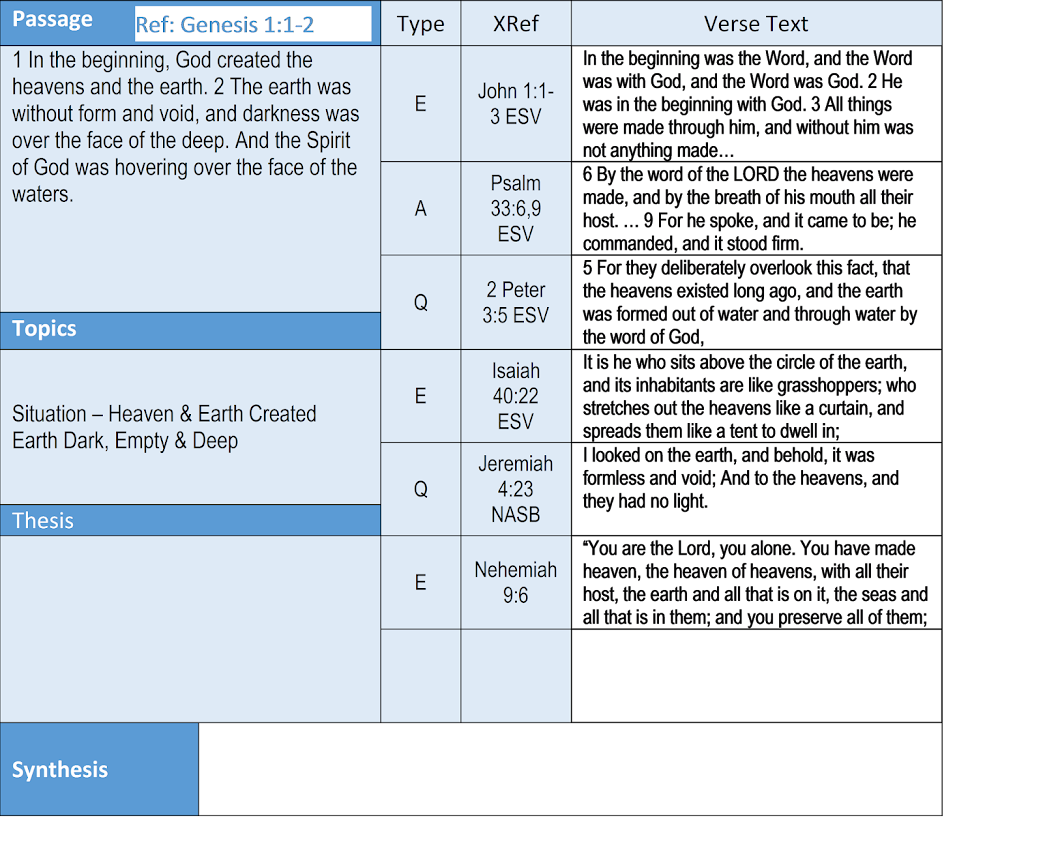Bible Study Advanced – Key Word Study
August 8, 2011 2 Comments
As you read through the bible you will want to start looking more deeply at passages to get all the meaning out of them. This is called studying as opposed to just reading through the bible. There are several methods and we had previously discussed a cross-reference study. Another type of study is a Key Word study. The purpose is to get a broader sense of what the words meant to the culture and people in the bible and to check if the word chosen by the translator is the closest definition to what the verse is trying to say, to the context of the words in the verse. When we use a word we are aware of the connotations and possible meanings a word may have from our language but these may not be the same as the word in the Bible in its original language. A key word study is necessary to get the best picture of the thoughts that came to mind when the original author wrote the passage.
As you study a passage look for repeated words, lists or words that are critical to what the text is saying. Then look these words up in a lexicon such as the Strong’s concordance, or those available in bible software such as Logos or BibleWorks or free programs such as The Word (www.theword.net) or online at sights such as new.studylight.org. Another tool is the Interlinear Scripture Analyzer from www.scripture4all.org. If you have an Interlinear or key word study bible it will list Strong’s numbers above each word that can be used to look up the original Hebrew or Greek word behind the word translated into English. The next step in a key word study is to note the definitions which are the possible denotations the word might have when used in a sentence. It should also be understood that the etymology and consideration of all denotations forms a picture of the sense of connotation which use of the word would also entail. (An example of connotation would be when I say something is superior instead of saying it is best there is a sense of arrogance with the term superior.) Record the generic sense that you get from the word whether it has a positive or negative sense or a superior sense. As you look at the references and note the uses of the word this will also build a sense of what connotations the word carried.
Further consideration of the uses of the word in the Bible should establish its most common use or common definition or denotation. Then examples of use should be explored by looking for categories in which the immediate context might be placed that describe types of qualifications that determine the most likely definition or the most correct denotation. From a site like new.studylight.org you can look up a key word and then list its uses either by translation or book of the bible. You may then drill down by translation and get a set of example verses. Looking at how the word is used in these verses. For nouns consider the verbs or actions they take and for verbs consider the subjects and objects. The Interlinear Scripture Analyzer groups references down to word form and morphology and translation allowing for even greater consideration of the context and translation relative to the meaning of the word. This may also be accomplished using bible study software and either the search interface or through concordance modules. Determine if you can categorize these surrounding words into more generic descriptive concepts and record these generic concepts next to the lexicon definition in a table similar to the one inserted below. These generic concepts and categories form the qualifications that can help to determine the most appropriate denotation for a word within the verse you are looking at or considering. Compare the context of the verses you are exploring and then determine which categories the context most closely aligns to; from this the appropriate translation might be verified. The assumption is that most of the other translations of the word will likely be accurate. If a translation may be off it will likely stick out like the proverbial sore thumb as its context (the types of other words around it) will differ from most other examples.
For example re’shiyth can mean first or beginning. In the cases where it generally means first it is part of the object and modifies what is produced so the category would be it qualifies something produced. Whereas when it generally means beginning it modifies an action or role. Then looking for these qualifications the chosen translation of the word in a sentence may be validated considering both its common use and categorization of the immediate context. The goal shouldn’t necessarily be to the level of textual criticism necessary for translation but to clarify the intended meaning and gain understanding of the broader connotation of a few key words. There are many great online tools as well as bible software programs that may be used to look up key words. For this article the strong’s entries and passage lists can be found at Blue Letter Bible (www.blb.org[1]) and the lexicon at new.studylight.org.
|
Strong’s H8414 |
Transliteration |
|||||||||||||||||||||||||||
|
תֹּהוּ |
tohuw |
|||||||||||||||||||||||||||
|
Pronunciation |
Root Word |
|||||||||||||||||||||||||||
|
tō‘·hü |
from an unused root meaning to lie waste |
|||||||||||||||||||||||||||
|
N,M |
||||||||||||||||||||||||||||
|
||||||||||||||||||||||||||||
|
Passages |
||||||||||||||||||||||||||||
|
||||||||||||||||||||||||||||
1 Corinthians 2: 14-15 NASB 14But a natural man does not accept the things of the Spirit of God, for they are foolishness to him; and he cannot understand them, because they are spiritually appraised. 15But he who is spiritual appraises all things, yet he himself is appraised by no one.
1 Corinthias 2:14-15 AMP 14 But the natural, nonspiritual man does not accept or welcome or admit into his heart the gifts and teachings and revelations of the Spirit of God, for they are folly (meaningless nonsense) to him; and he is incapable of knowing them [of progressively recognizing, understanding, and becoming better acquainted with them] because they are spiritually discerned and estimated and appreciated. 15 But the spiritual man tries all things [he examines, investigates, inquires into, questions, and discerns all things], yet is himself to be put on trial and judged by no one [he can read the meaning of everything, but no one can properly discern or appraise or get an insight into him].
You may ask “If the AMP does this expansion then why would I want to do a key word study”? Well the AMP doesn’t expand upon every word and well, you should want to verify for yourself if the expansions of meaning done by the AMP makes sense. But reading the AMP can give you a sense of how much more you can see in a verse if you look more deeply at what a word meant and what other meanings it carried.
More advanced lexicons used by students of Greek and Hebrew aren’t based upon Strong’s numbers but function more like a dictionary. This requires knowledge of the Greek or Hebrew alphabet and looking up words like one would in a common English dictionary. However there are some tools for Greek that can allow us to take advantage of these resources. The Study Light (new.studylight.org) or Blue Letter Bible (www.blb.org) provide interlinear bibles from which the Greek word may be copied into your clip board. The word may then be pasted into the Perseus Digital Libraries (http://www.perseus.tufts.edu/hopper/search) search engine using the Word Study Tool on the right side of the page. This resource provides access to lexicons such as the LSJ, Liddell and others. These resources provide more in-depth definitions and other examples of uses of the word through out history and in other literary works. Additionally more advanced keyword studies would include consideration of word forms with in the verse you are reading. Word forms include noun plurality and gender and verb tense/aspect, voice and mood. Such considerations place further limits on the meaning and scope or depth of what is being talked about. But this is a topic for further discussion in another article.
[1] Blue Letter Bible. “Dictionary and Word Search for tohuw (Strong’s 8414)“. Blue Letter Bible. 1996-2011. 27 Jul 2011.




